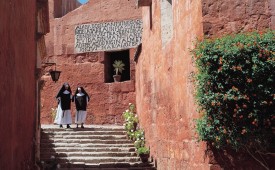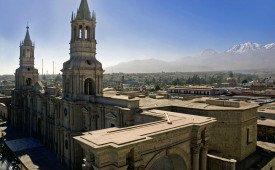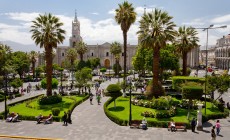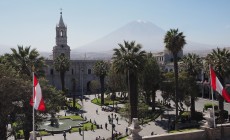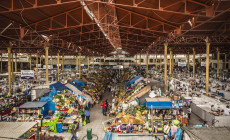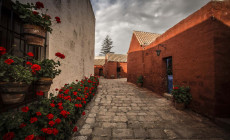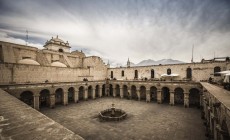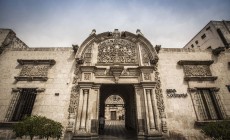-
Latin America
Latin America
- Countries (hidden space)
- Galapagos & Ecuador
- Guatemala
- Mexico
- Panama
- Peru
- Popular Attractions
- Machu Picchu
- Inca Trail
- Easter Island
- Galapagos Islands
- Patagonia
- Rio de Janeiro
- Iguazu Falls
-
Africa
Africa
- Spacer Africa
- South Africa
- Zimbabwe
- Popular Attractions
- Cape Town
- Okavango Delta
- Sossusvlei Dunes
- Victoria Falls
- The Kruger
- The Garden Route
- Masai Mara
-
Asia & Middle East
Asia & Middle East
- Asia
- Borneo (Malaysia)
- Cambodia
- India
- Japan
- Middle East
- Jordan
- Spacer Asia
- Laos
- Sri Lanka
- Uzbekistan
- Vietnam
- Popular Attractions
- Taj Mahal
- Lion Rock (Sigiriya)
- Angkor Wat
- Ha Long Bay
- Kyoto
- Petra
-
Destinations
- Latin America
- Argentina
- Bolivia
- Brazil
- Chile
- Colombia
- Costa Rica
- Galapagos & Ecuador
- Guatemala
- Mexico
- Panama
- Peru
- Asia
- Borneo (Malaysia)
- Cambodia
- India
- Japan
- Laos
- Sri Lanka
- Uzbekistan
- Vietnam
- Middle East
- Jordan
- Southern & East Africa
- Botswana
- Kenya
- Namibia
- South Africa
- Zimbabwe
- Contact Us
-
About
About
Llama Travel provides high quality holidays at the lowest possible prices.
99% recommend us Lower prices - guaranteed Financially protected by ATOL
Arequipa is Peru's second largest city, with a population of approximately 700,000. However, it has the feel of a small town, with the centre being compact and containing most areas of interest. Away from the centre, the city rapidly becomes residential, although there are a few sights worth visiting.
Arequipa Location
Located in southwestern Peru, the splendid city of Arequipa lies in the shadow of three giant volcanoes. Chachani, at 6,075m is the highest, but it is the perfectly conical Misti that draws the attention. After the rainy season, when the snowline often reaches several thousand metres below the summit, it is wonderful just to admire the mountain. Although Arequipa is in the middle of a desert, agriculture has ensured that directly around the city there is plenty of greenery. The barren hills clearly visible from the city form a stark contrast with the fields found throughout the city.
Arequipa History
Flying into Arequipa gives a sense of the inhospitableness of the landscape. Surrounded by volcanoes and deep gorges, all in a vast desert, it is easy to understand why the relatively benign geography of the valley of Arequipa, and its vegetation provided by the irrigation of the River Chili, attracted its first Spanish settlers. The city of Arequipa was founded, or at least re-founded, on August 15 1540, by Francisco Pizarro's envoy, and in 1541 the king of Spain gave the city the title of Villa Hermosa - beautiful city.
There are a number of stories as to how Arequipa got its name. Some claim that the Inca general Mayta Capac stopped in the valley and moved by its beauty said 'Are quepay' - 'stay here'. Other versions say that the Aymara Indians living in the valley called it 'Ariquipa', meaning the place behind the pointed mountain, referring to Misti.
The centre of Arequipa is built out of a unique white volcanic rock, sillar, spewed out of nearby Chachani. This gives the city a majestic aspect, especially around sunset when the changing colours of the sky are reflected in the facades of the buildings. Arequipa is known as 'la ciudad blanca', 'the white city', and many people believe that this is because of the sillar. However, a more sinister explanation, which is probably more accurate, is that the racial purity of its original citizens, thoroughbred Spaniards, is the real reason for the city's name. Although Arequipa did used to be a stronghold for wealthy citizens of the Old World, this whiteness has long been replaced by a varied hue of skin-tones, with many residents originating from the sierra.
Visit Arequipa
What cannot be denied is the beauty of the city centre. Declared a UNESCO World Heritage Site in December 2000, the city is a wonderful example of the blending of colonial architecture with local conditions. Many of the colonial palaces and houses still stand, despite numerous earthquakes, and can be visited. The churches are particularly beautiful and are a delight to wander round, both inside and out.
Arequipeños like to think of themselves as being separate from, and superior to, the rest of Peru, and much of Arequipa is very traditional and regional. It is even possible to get an Arequipeño passport, although this is no more than regional pride. However, the independence of the city is reflected in its history, which has often opposed itself to directives from Lima. In 1950, students from the Colegio Independencia school went on strike to protest again central government policies. In a march in the Plaza de Armas the police opened fire on the students, killing many. Signs of this are still visible in the clock face of the Cathedral, where a bullet hole from the shooting can be seen.
Arequipa city and towns in the region have spawned a number of renowned, and infamous, Peruvian figures, including the writer Mario Vargas Llosa, the former leader of the Shining Path Abimael Guzmán, former president Fernando Belaunde Terry and Vladimiro Montesinos, the leader of Peru's intelligence service during Alberto Fujimori's term of office. Montesinos has been attributed with the rise and fall of Fujimori's reign of power.
Arequipa is a wonderful city to stay for a few days, exploring its beautiful centre and relaxing in the many cafes and bars, enjoying the sunshine, and it makes an excellent base for visiting the nearby Colca Canyon.

